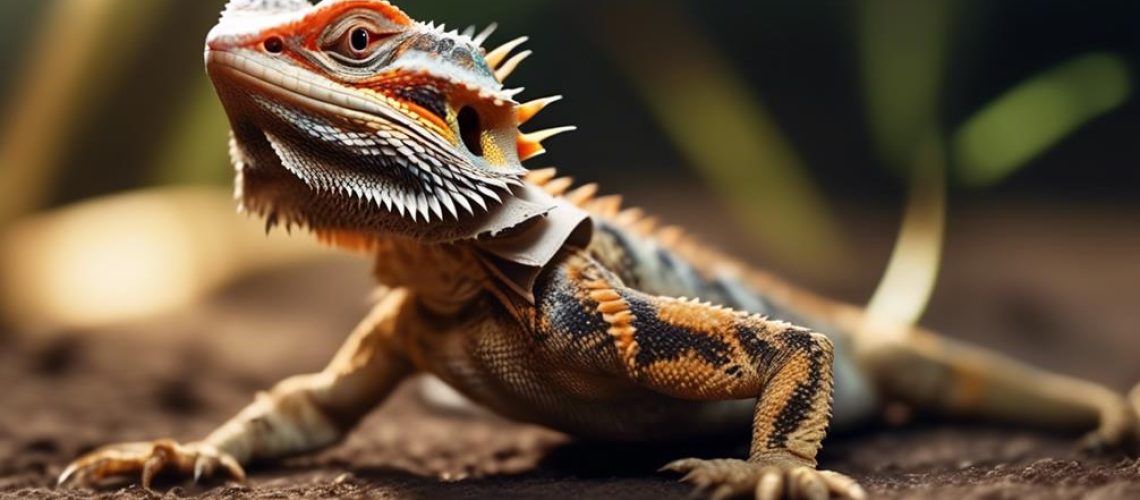Hey there, lizard lover! Ever wondered if your bearded dragon can chow down on some dead crickets? Well, guess what? They totally can!
But hold your excitement for just a moment, because there are a couple of things you need to know.
Dead crickets come in a few different forms – freeze-dried, frozen, or canned – and they’re all safe for your scaly pal to munch on. Some fancy-pants commercial foods even include dead crickets as an ingredient.
But here’s the catch: bearded dragons might not be too thrilled about eating something that’s not wiggling around like a tiny little acrobat. So, you’ll need to get a bit creative to make those dead crickets more appetizing.
Stick around, my friend, because I’m about to spill the beans on feeding your bearded dragon these lifeless critters.
What can Bearded Dragons Eat?
Well, the common practice is to feed them live insects like crickets, mealworms, or dubia roaches. These little critters provide the optimal nutrition that your bearded dragon needs to stay healthy and strong.
Just make sure to avoid those dead crickets, ’cause they lose their nutritional value real quick and can even attract icky bacteria and parasites. Stick to the live ones, buddy!
What are the common practice of feeding live insects?
When it comes to feeding your bearded dragon live insects, there are some common practices you should know about.
While bearded dragons can eat dead crickets, they may have trouble recognizing them as food. To help, you can use tongs or hide the dead crickets in veggies. Make sure the cause of death is known and avoid feeding dry or less nutritious crickets.
But remember, live crickets are preferred because they stimulate your beardie’s hunting instincts and have more calcium.
Do Crickets have Nutritional Value?

Crickets are like little nutrient bombs for your bearded dragon! They’re filled with all the good stuff that your beardie needs to stay strong and healthy.
Here are some important facts about the nutritional value of crickets:
- Crickets are packed with essential minerals like calcium, potassium, magnesium, phosphorus, iron, and zinc.
- They also contain important vitamins like B group vitamins, vitamins A, C, D, E, and K.
- Crickets are a great source of protein for your bearded dragon.
- They’re low in fat, making them a healthy addition to your dragon’s diet.
Nutritional Content in Live vs. Dead Crickets
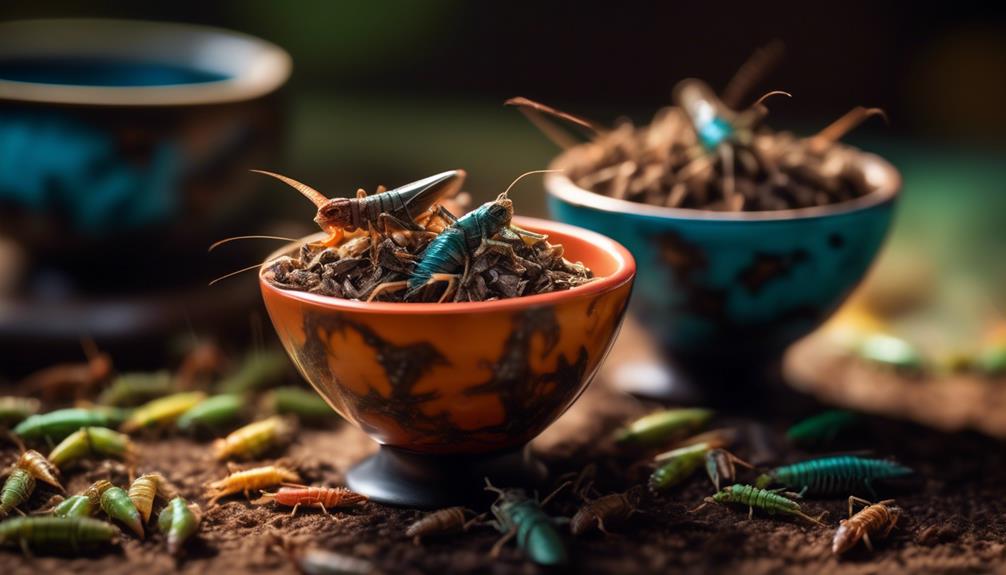
Here’s a table comparing the nutritional content of live vs dead crickets per 100g:
| Nutrient | Live Crickets | Dead Crickets | % Loss |
|---|---|---|---|
| Protein | 69.0 g | 58.0 g | 16% |
| Fat | 16.0 g | 13.0 g | 19% |
| Carbohydrates | 5.0 g | 4.0 g | 20% |
| Moisture | 60.0 g | 70.0 g | 17% |
| Calcium | 50 mg | 35 mg | 30% |
| Phosphorus | 200 mg | 170 mg | 15% |
| Vitamin A | 1000 IU | 500 IU | 50% |
| Vitamin B1 (Thiamine) | 0.1 mg | 0.08 mg | 20% |
| Vitamin B2 (Riboflavin) | 0.2 mg | 0.15 mg | 25% |
| Vitamin B6 | 0.5 mg | 0.4 mg | 20% |
| Vitamin C | 20 mg | 10 mg | 50% |
Live crickets have more nutritional value than dead crickets. They’re packed with essential nutrients and hydration that your bearded dragon needs.
Dead crickets lose their nutritional value quickly and may attract harmful bacteria and parasites.
Drawbacks of Dead Crickets
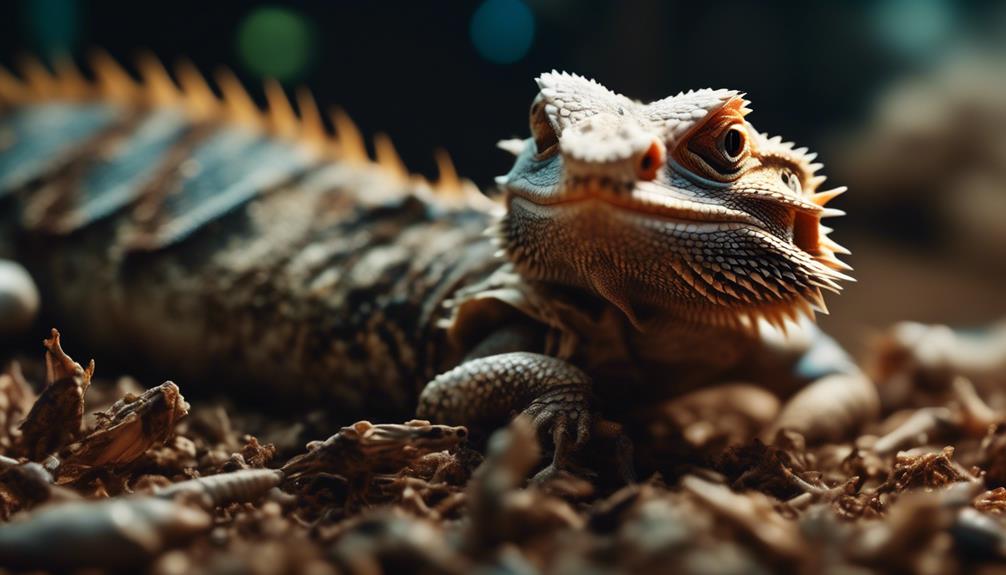
Okay, so here’s the deal with dead crickets for your bearded dragons.
Nutritional Deficiencies
Feeding your bearded dragon dead crickets can lead to nutritional deficiencies, which ain’t good for your scaly buddy.
Difficulty for Recognizing Food
Recognizing dead crickets as food can be kinda tough for bearded dragons because they don’t move and dragons like things that move. Since dead crickets don’t wiggle around like live ones, bearded dragons mightn’t even realize they’re food.
It’s like trying to find a hidden treasure without a map! To help your dragon out, you can use tongs or tweezers to make the dead crickets move or hide them in some yummy veggies. That way, it’ll be easier for your dragon to spot the food and gobble it up.
Potential Spoilage
Since dead crickets don’t wiggle around like live ones, your bearded dragon mightn’t even realize they’re food. But there’s another issue you need to watch out for when it comes to feeding them dead crickets.
Here are some potential spoilage problems to consider:
- Dragon might get sick if they eat crickets that are too large or crickets that have died from illness.
- Dead crickets can decompose quickly and become smelly and gross.
- Eating dead ones could make your beardie sick if the cricket died from pesticides or other chemicals.
- Decomposing crickets can also attract bacteria and mold, which is bad for your dragon’s health.
Importance of Live Crickets
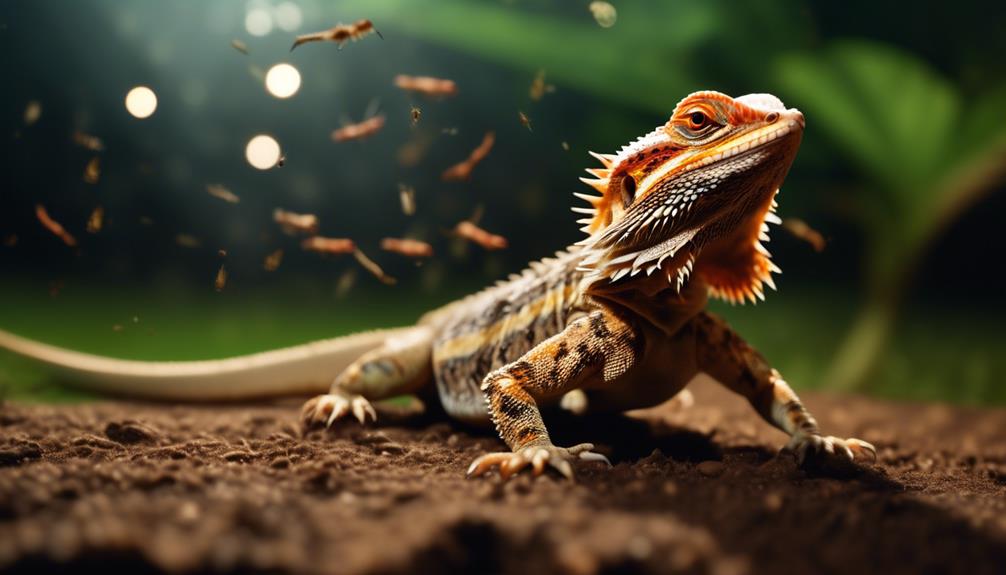
Live crickets are like the MVPs of your bearded dragon’s diet. They’re packed with all the nutrients your dragon needs to stay healthy and strong.
Plus, they give your dragon a chance to show off their badass hunting skills and stay mentally stimulated.
And the best part? They’re totally cost-effective, man.
Nutritious Value
Live crickets are an important and nutritious food source for your bearded dragon. They’re high in protein and low in fat, and contain essential vitamins and minerals that keep your dragon healthy. Eating live crickets is a good idea because they provide stimulating movement and have a higher calcium content.
Dried crickets are usually safe to feed, but they aren’t as nutritious as live ones. It’s important to make sure your bearded dragon gets a balanced diet, and live crickets should be a part of it.
Variety
Now let’s talk about why live crickets are super important for your bearded dragon’s diet.
Sure, you can give your dragon canned crickets or freeze-dried crickets, but nothing beats the real deal. Your reptile needs that variety in their diet, and live crickets provide just that.
They give your dragon something to chase and hunt, just like they’d in the wild. So, treat your dragon like a real predator and feed them live crickets.
Hunting Instinct
When your bearded dragon hunts live crickets, it’s like they’re a wild predator on the prowl! Live crickets have stimulating movement that attracts your dragon’s attention and encourages them to eat.
Cost-effective
Feeding your bearded dragon live crickets is not only important for their health, but it’s also a cost-effective way to provide them with the essential protein and nutrients they need.
Can Bearded Dragons Eat Dead Crickets?
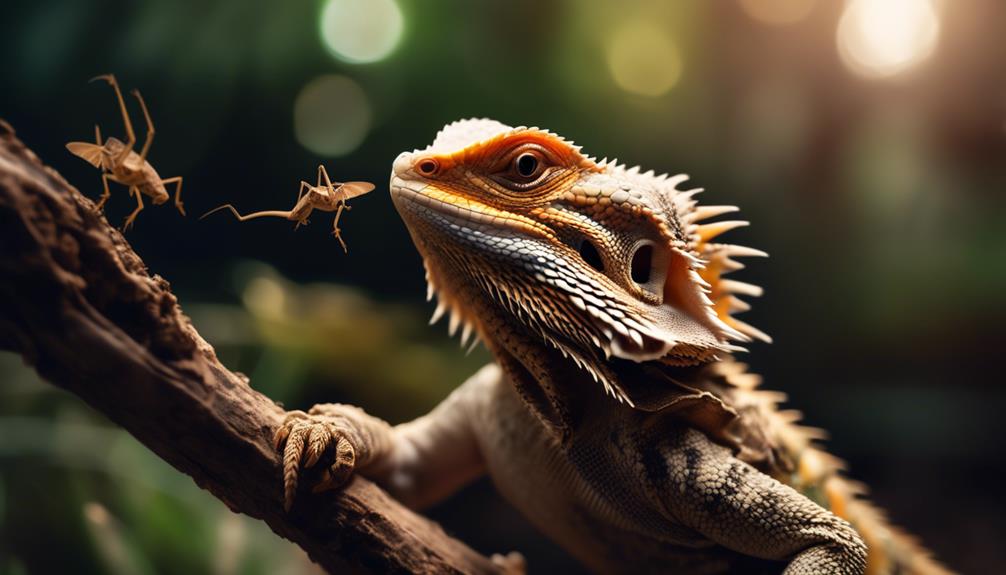
Dead crickets aren’t recommended to feed to your bearded dragon as they lack the necessary nutrients to keep your dragon healthy.
Frequently Asked Questions
Can Bearded Dragons Eat Dried Crickets?
Yes, bearded dragons can eat dried crickets. They’re safe to eat and can be found in some commercial foods. But remember, they might not recognize them as food, so use tongs or hide them in vegetables.
Is It OK to Leave Crickets in Bearded Dragon Tank?
Yes, it’s okay to leave crickets in your bearded dragon’s tank, but it’s important to monitor them. Dead crickets can attract harmful bacteria. Be sure to remove any uneaten crickets to keep your dragon healthy.
What Eats Dead Crickets?
Yeah, lots of things can eat dead crickets! Birds, spiders, lizards, and even some frogs. But bearded dragons prefer live crickets because they’re more fun to chase and have more calcium.
What Can I Feed My Bearded Dragon if I Run Out of Crickets?
If you run out of crickets, you can feed your bearded dragon other insects like mealworms or dubia roaches. Just make sure to get them from a reliable source for your pet’s health and safety.
Conclusion
So, can bearded dragons eat dead crickets? Yes, they can! But it’s important to remember that live crickets are preferred because they provide more stimulation and nutrition.
Dead crickets can be a good option if your dragon isn’t interested in live ones, but you might need to get creative to make them more enticing. Just make sure the dead crickets aren’t dry or lacking in nutrients.
Keep your scaly friend happy and healthy with a balanced diet!

